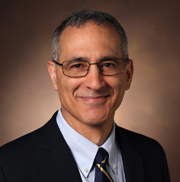Vanderbilt team to focus on engineering, testing the device
by Matt Batcheldor
Vanderbilt University Medical Center will share in an $8.7 million federal grant to create an artificial lung system that patients with incurable lung disease can use at home.
The Department of Defense Congressionally Directed Medical Research Program (CDMRP) grant will fund research to create and test the device, which is intended for patients who may not be able to wait long enough for a lung transplant or are not candidates for one.

The goal for the device is to care for such patients indefinitely, said Matthew Bacchetta, MD, MBA, MA, professor of Surgery and adjunct professor of Biomedical Engineering, who leads Vanderbilt’s research team working on the device. The device could also help patients rehabilitate from temporary life-threatening lung issues and serve as a bridge to transplant.
Vanderbilt’s team will focus on engineering and testing the modes of vascular access and the ergonomics of the device as well as developing the gas exchange portion of the device. Bacchetta hopes to include Vanderbilt University students participating in the Vanderbilt Institute for Surgery and Engineering.
More than 12 million people suffer from chronic lung disease, and for the majority of them, it is related to chronic obstructive pulmonary disease.
Veterans are about three times more likely than the general population to develop COPD, which is why the military is funding the research, Bacchetta said.
Meanwhile, no truly ambulatory artificial lung exists. Extracorporeal membrane oxygenation (ECMO) is a life-sustaining mechanical system that temporarily takes over for the heart and lungs of critically ill patients, but it is administered in the hospital and cannot be used in the home. And transplants are difficult for patients to obtain due to restrictive criteria because of the lack of organs.
“The need for helping people with chronic lung disease is just so apparent, because it’s literally millions,” Bacchetta said. “Transplant is obviously the only outlet for those patients. If you can’t get a transplant, you are stuck living with chronic lung disease. The need is quite great, and there is little out there that addresses it.”
Vanderbilt’s research team will share the four-year grant with teams from Carnegie Mellon University and Cornell University.
The Cornell group is working on the coatings technology to make the device more biocompatible and the Carnegie Mellon group will also work on the gas exchange portion, create a telemedicine program that will allow the device to be monitored remotely and develop anticoagulants that would allow patients extended use of the system. The overall effort is led by Keith Cook, PhD, department head of biomedical engineering at Carnegie Mellon. He and Bacchetta have been collaborators for several years.
“The intent is that this could potentially be used for years,” Bacchetta said. “It’s a very different design approach from ECMO. It’s different because ECMO is temporary and limited to an ICU setting. That’s not our design intent. We’ve completely erased that drawing board and created a new drawing board that is focused on management of chronic lung disease in a durable and enduring fashion, really as a destination therapy.”